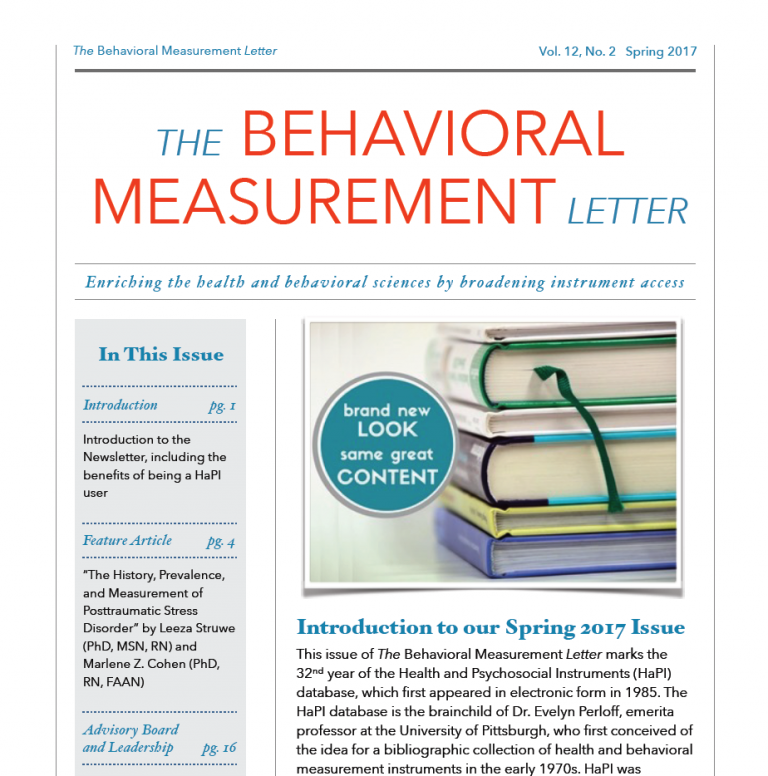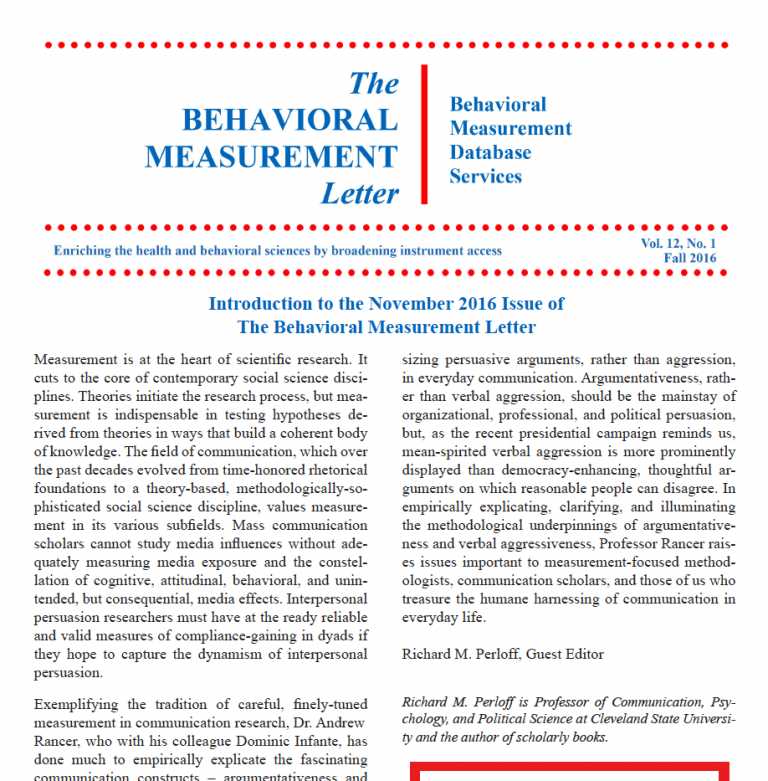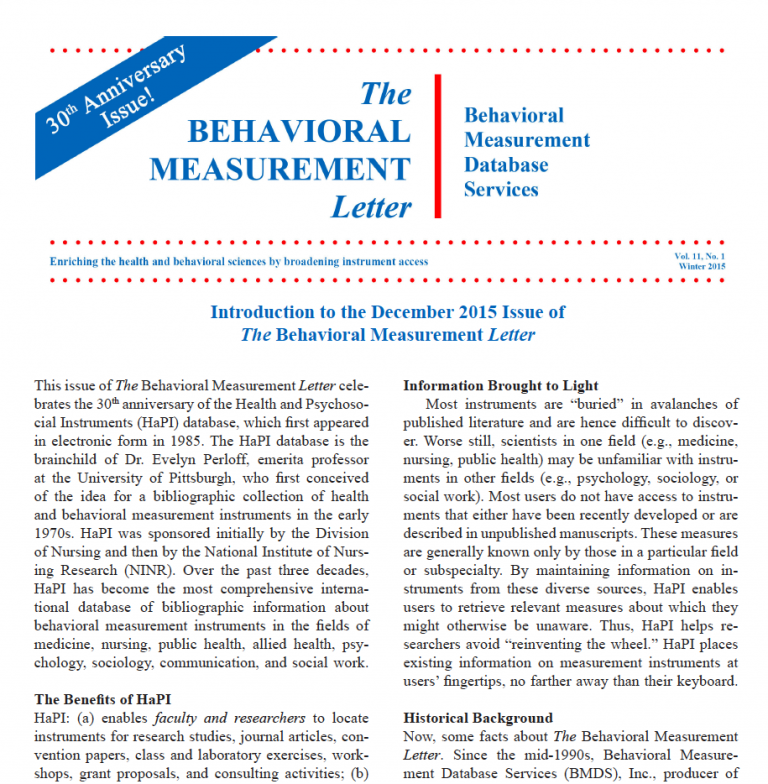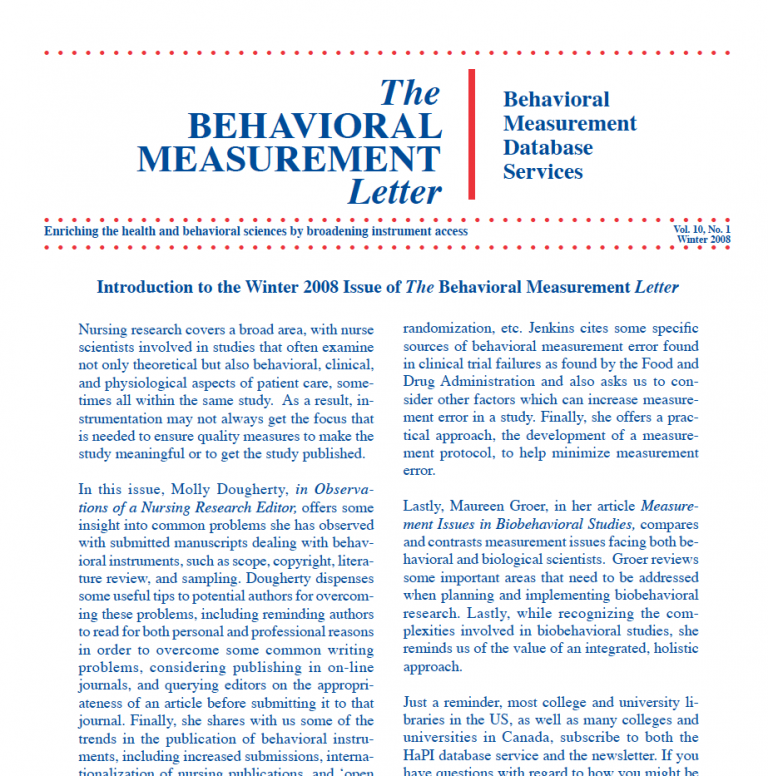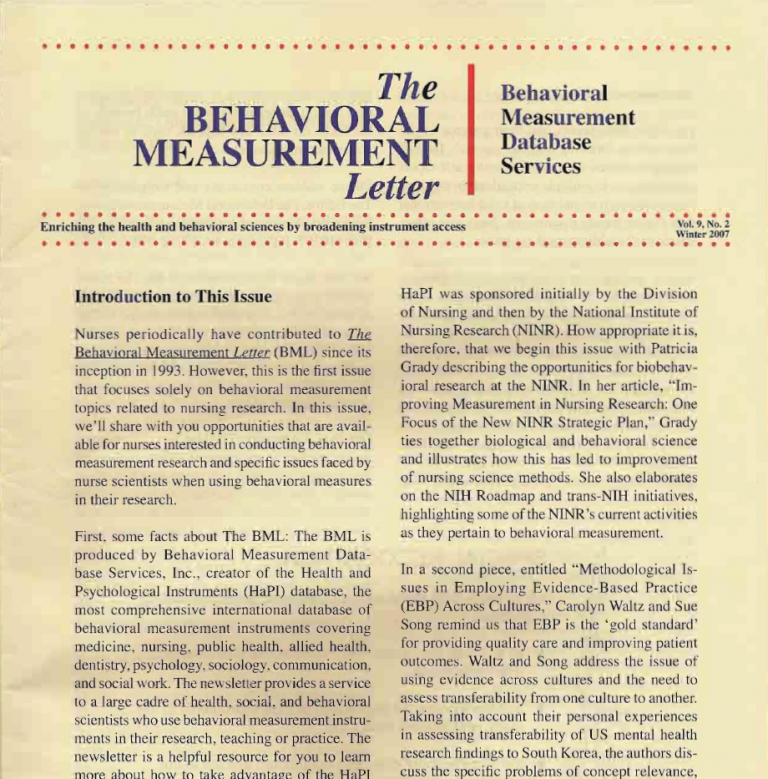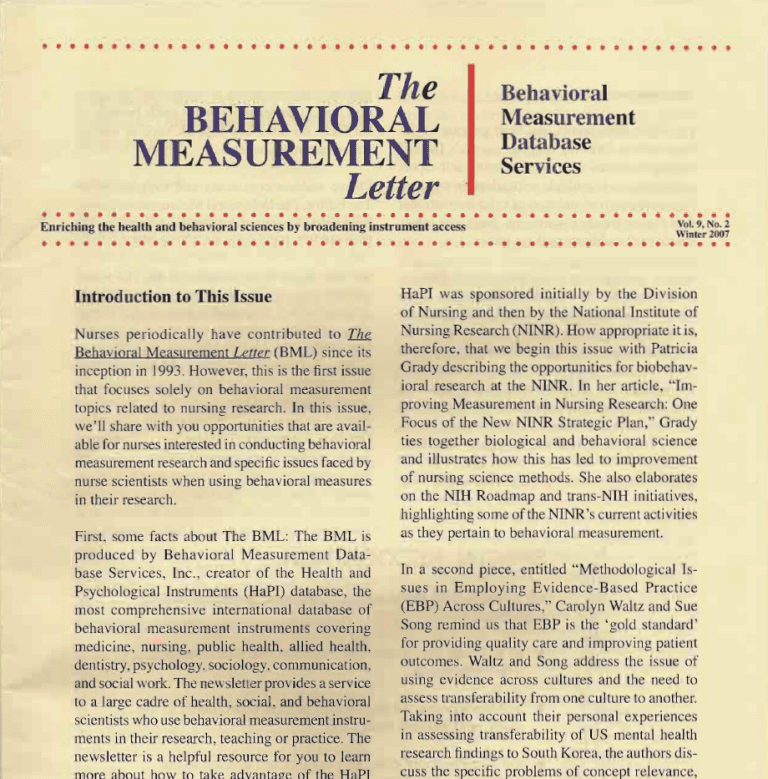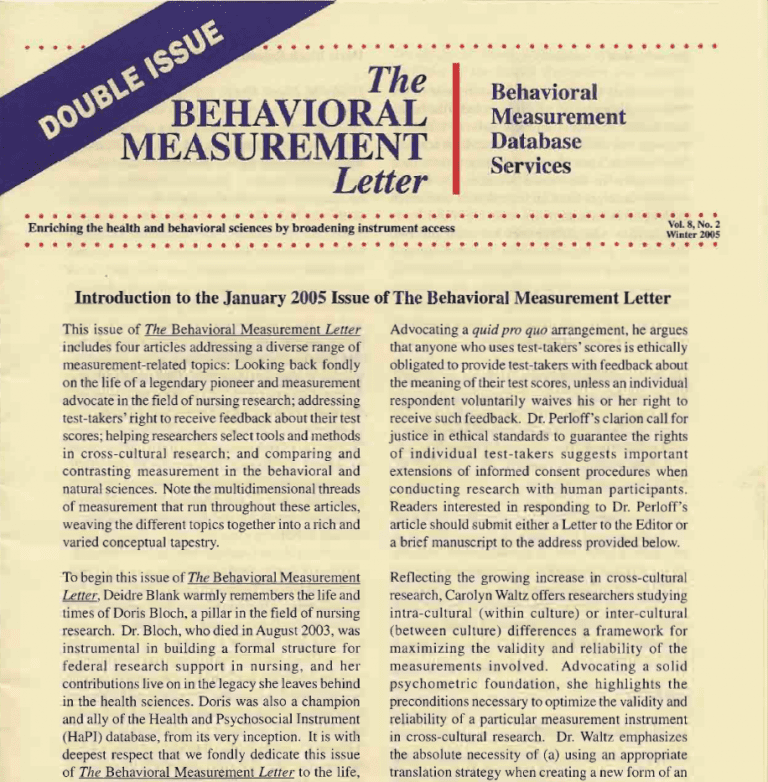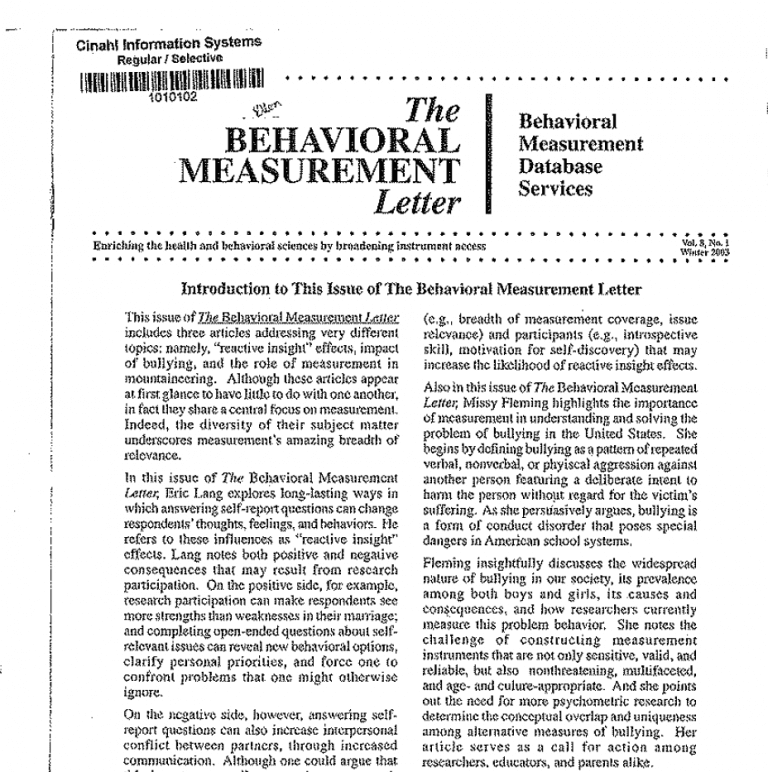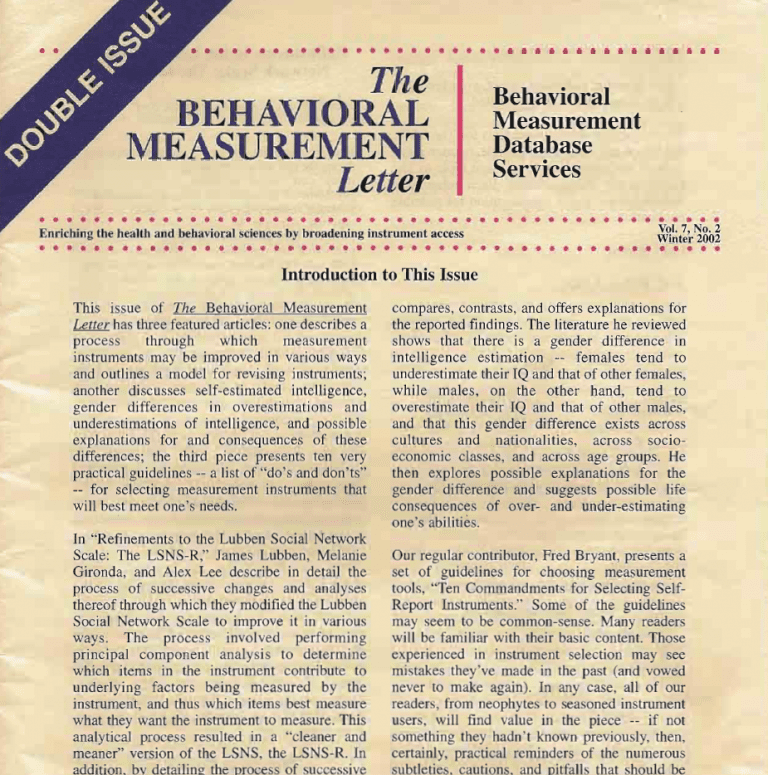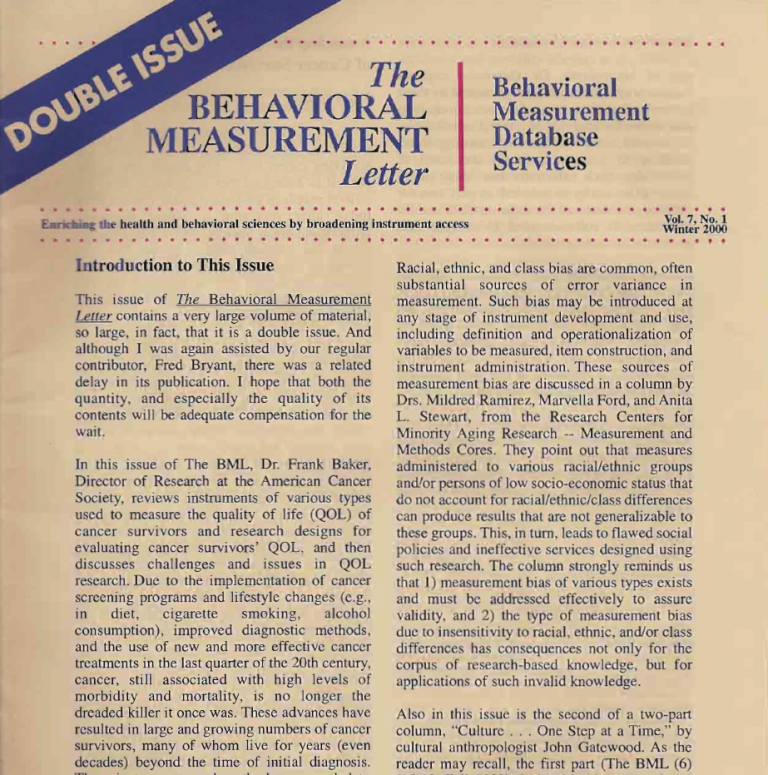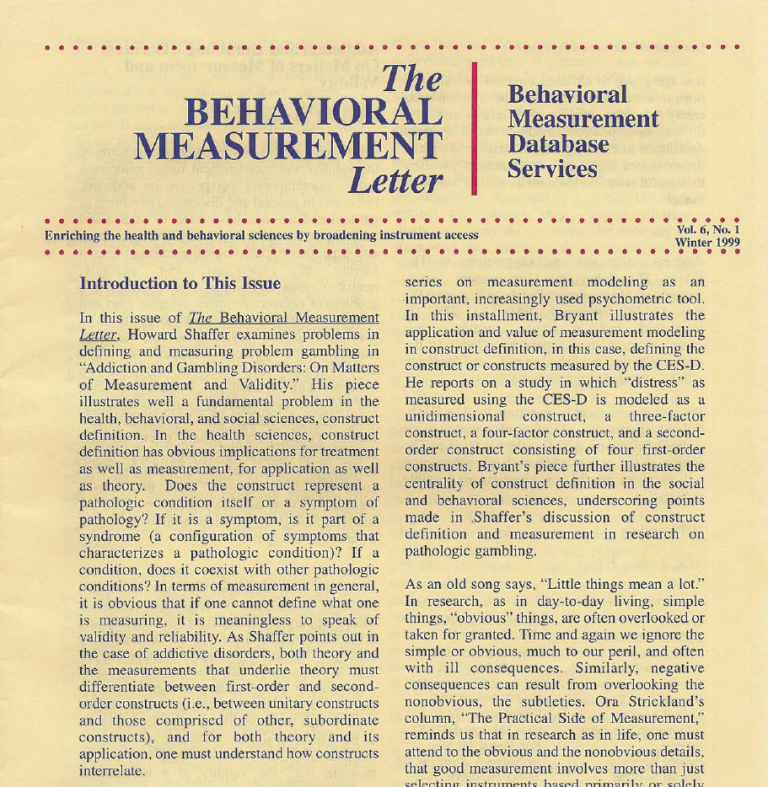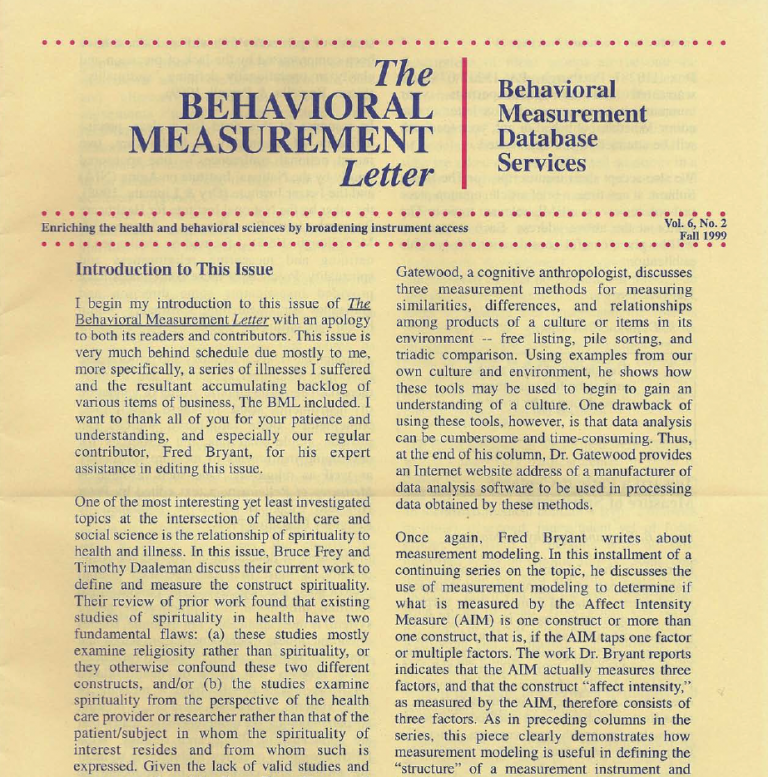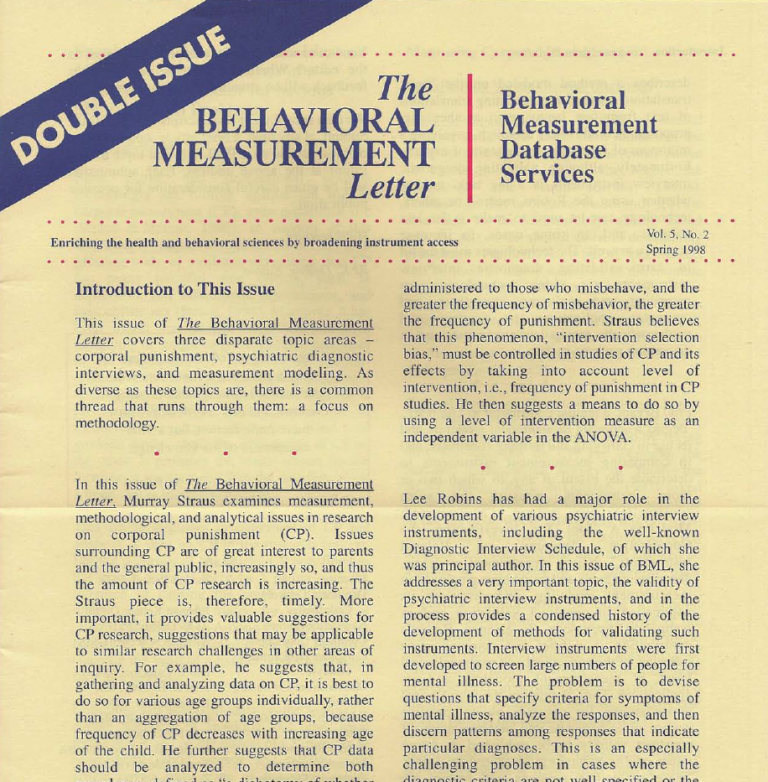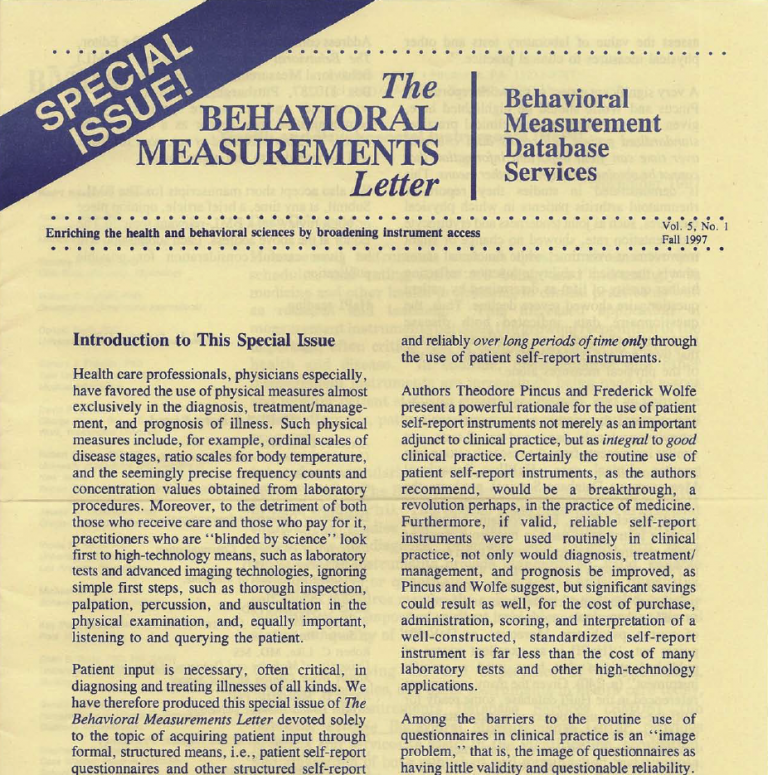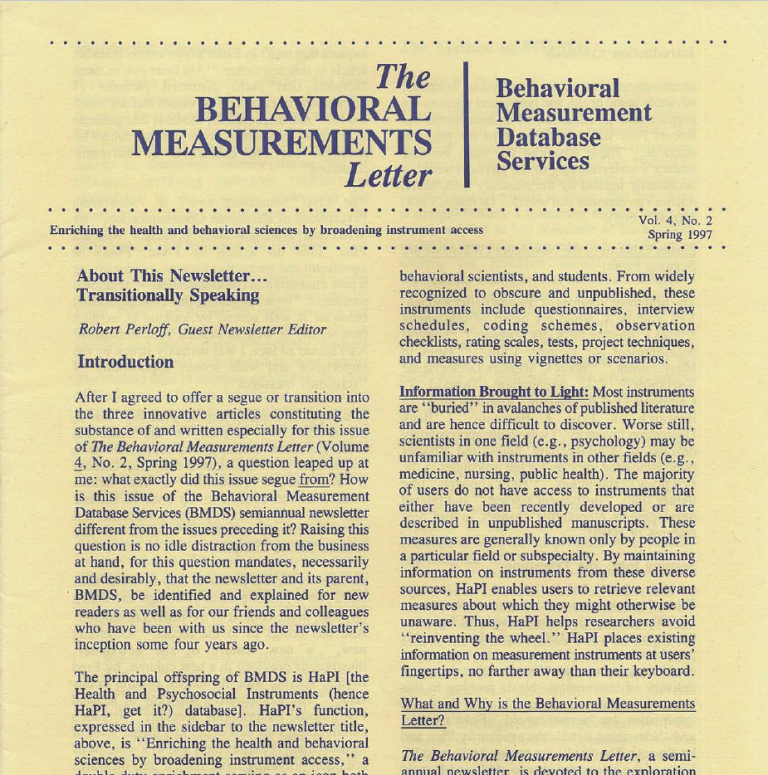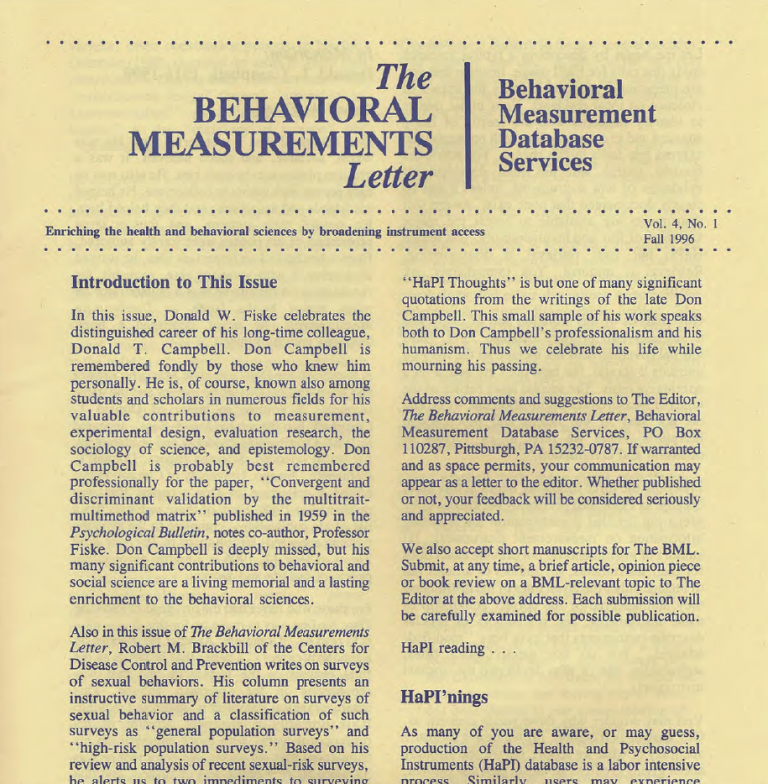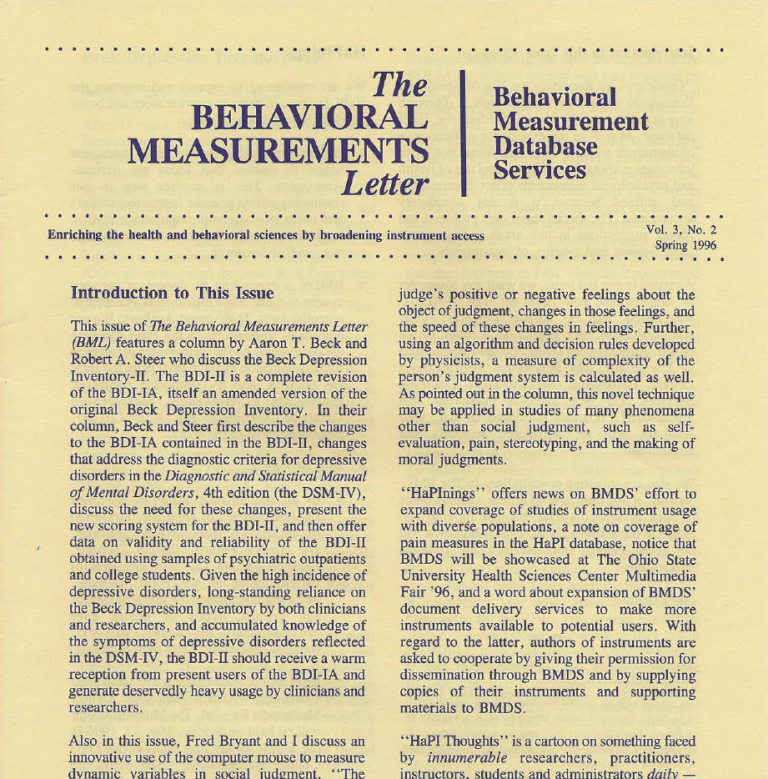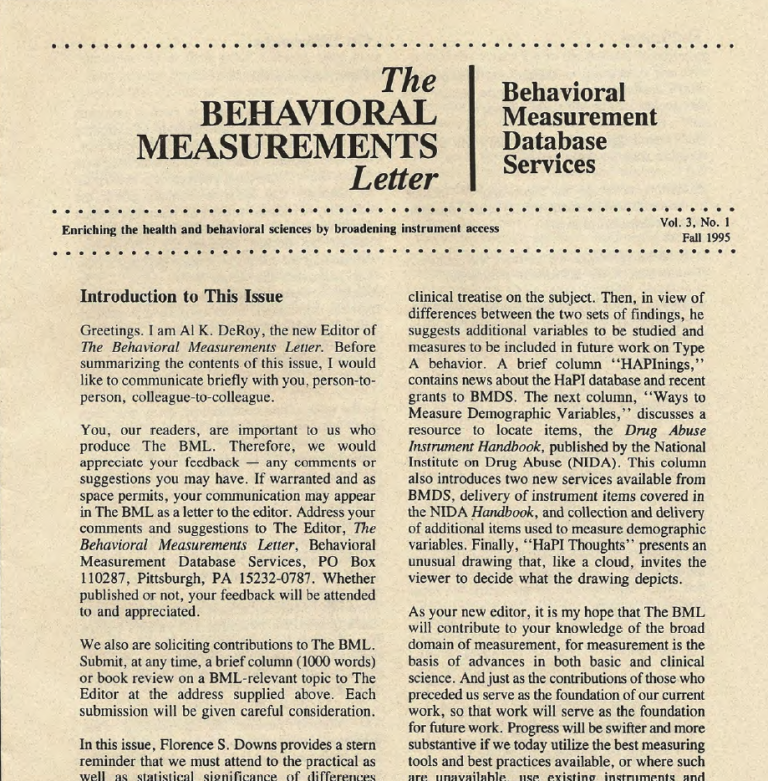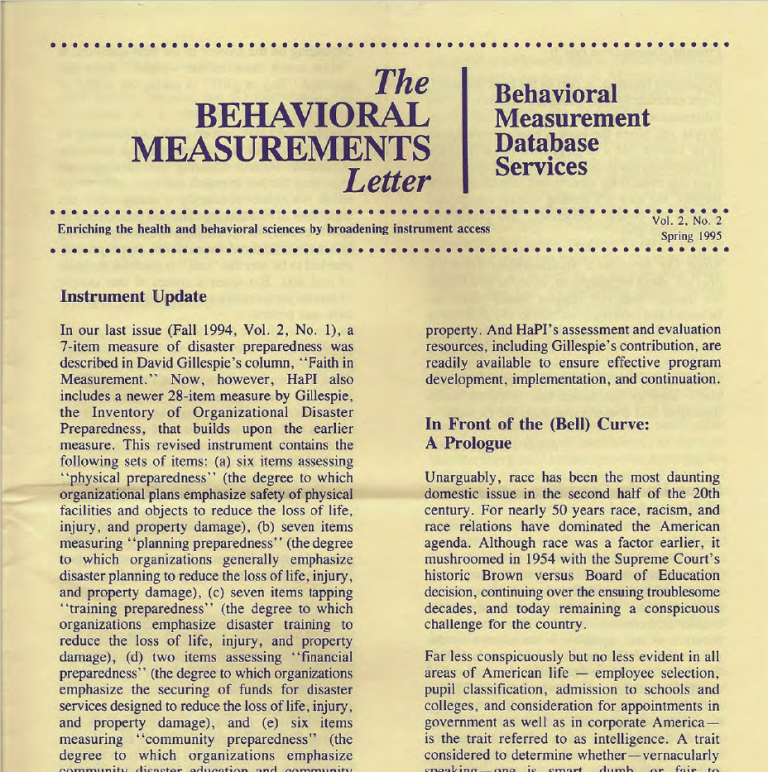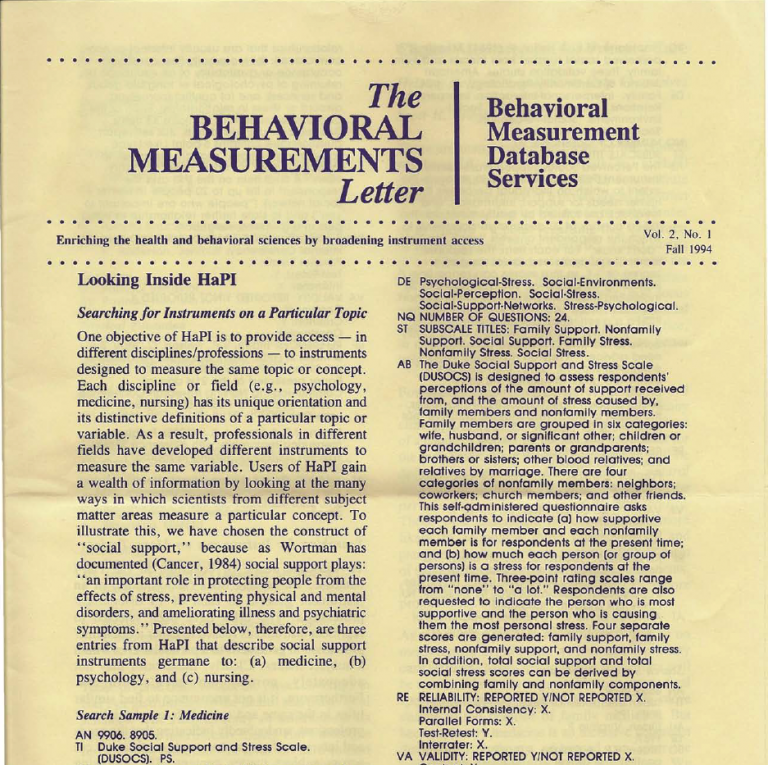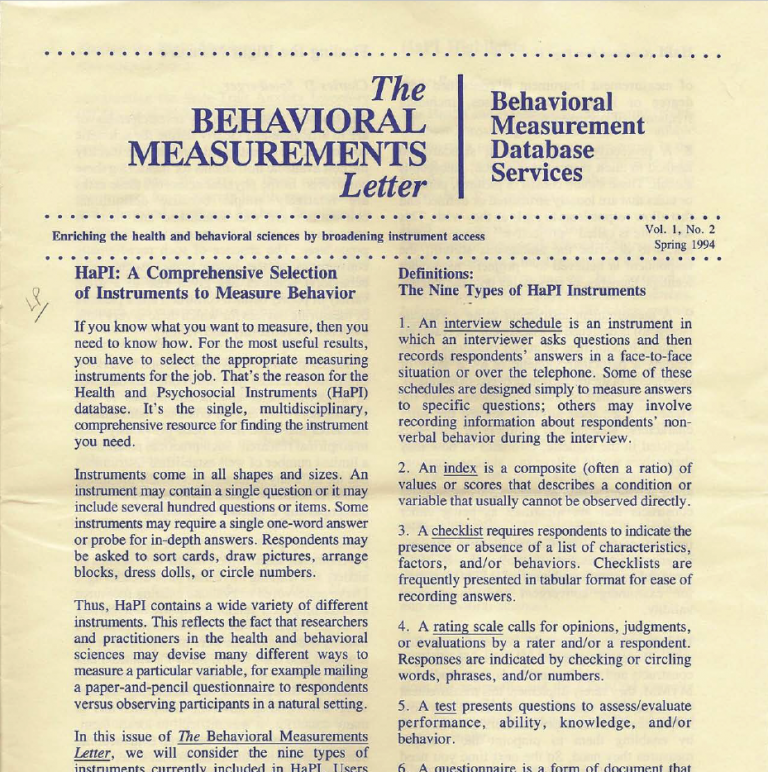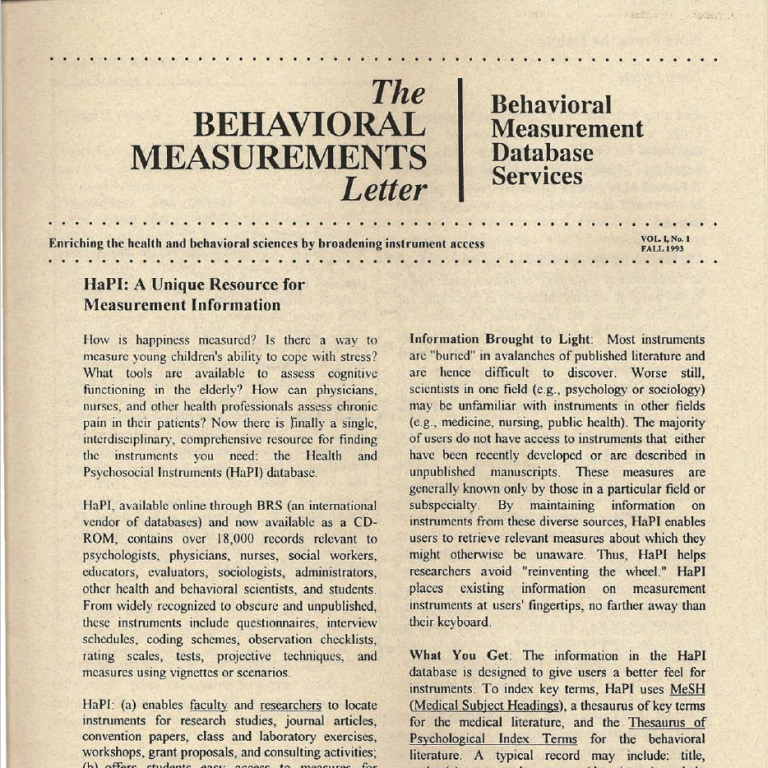Continued article from the The Behavioral Measurement Letter, Vol. 4, No.2 Spring 1997
Michael Pfau
Relational communication is an intrinsic element in person perception. Judy Burgoon and Jerold Hale, who did the pioneering work developing and testing the relational communication scale, describe relational communication as signifying “how two or more people regard each other, regard their relationship, or regard themselves within the context of the relationship” (1984, Communication Monographs, 51, 193-214).
I called relational communication intrinsic because it occurs in all instances in which a communication modality makes possible either real contact, as in interpersonal communication, or perceived contact, as in mediated communication. People form relationships with others whom they encounter directly, and with those they experience indirectly (e.g., people they come to know via television). Horton and Wohl characterize the latter as “parasocial relationships” (1956, Psychiatry, 19, 215-229), but to those who experience them, they are every bit as real as direct encounters.
Relational messages can be communicated verbally, as when one person says to another: “I like you,” “I care about you,” or “I trust you.” However, they always are communicated nonverbally, accompanying other verbal content. As a consequence, relational messages are present in all communication transactions. When a physician describes treatment regimens to patients; television spokespersons urge adolescents not to smoke, drink, or use drugs; or politicians espouse health care policy; their spoken words carry a substantive message, but their nonverbals simultaneously express a relational message. Our research in the political and health contexts reveals that relational messages often overpower substantive messages in impacting receivers (e.g., see: Burgoon, Pfau, Parrott, Birk, Coker & Burgoon, 1987, Communication Monographs, 54, 307-324; Pfau, 1990, Journal of Broadcasting & Electronic Media, 34, 195-214; Pfau, Diedrich, Larson, & Van Winkle, 1993, Journal of Broadcasting & Electronic Media, 37, 275-292; Pfau & Kang, 1991, Communication Studies, 42, 114-128).
We have known about the presence of relational messages in human communication since Ruesch and Bateson’s classic book in 1951 (Communication: The social matrix of psychiatry, New York: W. W. Norton). Later, when Watzlawick, Beavin, and Jackson observed that, “One cannot not communicate” (1967, Pragmatics of human communication: A study of interactional patterns, pathologies, and paradoxes, New York: W. W. Norton), they were stressing that people always communicate relational messages, regardless of the substance of their verbal message. However, precisely because relational messages contain both verbal and nonverbal components, the construct proved difficult to measure.
Burgoon and Hale (1987, Communication Monographs, 51, 193-214), conceptualized relational communication in a seminal article. They derived 12 relational communication dimensions based on a review of the extant literature on interpersonal and relational communication. Subsequently, they constructed and factor-analyzed 64 Likert items using 5-point strongly-disagree and agree scales. Results revealed an 8-factor solution as optimal. The eight dimensions were: similarity/depth, composure, formality, immediacy/affection, receptivity/trust, equality, dominance, and task orientation. However, the results indicated that more abbreviated versions of the measure also were satisfactory.
Initially, the researchers used Likert scales because the relational communication instrument was intended as a self-report measure. However, the measure also has been employed as an other- report (Burgoon, et al., 1987; Burgoon, Olney, & Coker, 1987, Journal of Nonverbal Behavior, 11, 146-165), an observer-report measure (Burgoon & Newton, 1991, Southern Communication Journal, 56, 96-113), and has been adapted for use as a 7-interval adjective-opposite measure.
When employed in a health context, the measure was adapted, with less relevant dimensions removed, and the number of items for each dimension reduced. Burgoon and colleagues (1987) used 14 items to tap relational communication in a physician-patient context, representing these six relational dimensions: composure (physician was relaxed, calm, and poised while talking with patient), immediacy (the physician communicated warmth and
involvement, and found the conversation stimulating), lack of dominance (physician didn’t dominate conversation), informality (physician made the interaction very informal), receptivity (the physician was open to patient concerns, interested, and willing to listen), similarity (physician made patient feel similar, and treated them as an equal). Due to unreliability, lack of dominance and informality were measured as single items due to unreliability. Coefficient alpha reliabilities of the remaining dimensions ranged respectively from .69 to .80, indicating that relational communication, particularly the dimension of receptivity, exerted significant influence on patient satisfaction with physicians.
When employed in a mediated campaign’s context, Pfau (1990) used 26 items which represented seven relational communication dimensions. Dimensions and scale items were: immediacy/affection (the communicator was involved, enthusiastic, interested, and warm), similarity/depth (communicator revealed depth, similarity, caring, and friendliness), composure (communicator was relaxed, comfortable, poised, and lacked tension), receptivity/trust (communicator was sincere, honest, interested in communicating, and seemed willing to listen), informality (the communicator displayed informality, equal status, and casualness), lack of dominance (communicator didn’t come off as taking the upper hand, manipulative, controlling, or pressing influence), and equality (the communicator was cooperative, displayed equality, and didn’t convey a superior attitude). The informality measure was dropped due to inadequate reliability. Reliability ratings of remaining dimensions ranged from .60 to .83. The results of the study of communication modalities in campaign influence revealed that relational communication in general, and the dimensions of receptivity/trust and similarity/ depth in particular, exercised considerable influence across modalities.
The relational communication instrument is quite promising. It uniquely taps both verbal and nonverbal components in person perception. It is adaptable to both direct and mediated contexts.
Finally, the relational communication measure appears to be both valid and reliable. Burgoon and Hale (1987) conducted a number of tests demonstrating validity for their relational communication instrument. Further, the relational communication instrument has achieved improved reliability ratings in recent studies.
Michael Pfau is Professor and Director of Graduate Studies, School of Journalism and Mass Communication, the University of Wisconsin-Madison. He has authored or co-authored four books and more than 50 articles and book chapters. His research interests involve mass media influence, particularly in the health and political contexts.
Read additional articles from this newsletter:
The Comparative Anatomy of Related Instruments: An Emerging Specialty
The Multitrait Multimethod (MT-MM)
4-2-spring-1997

